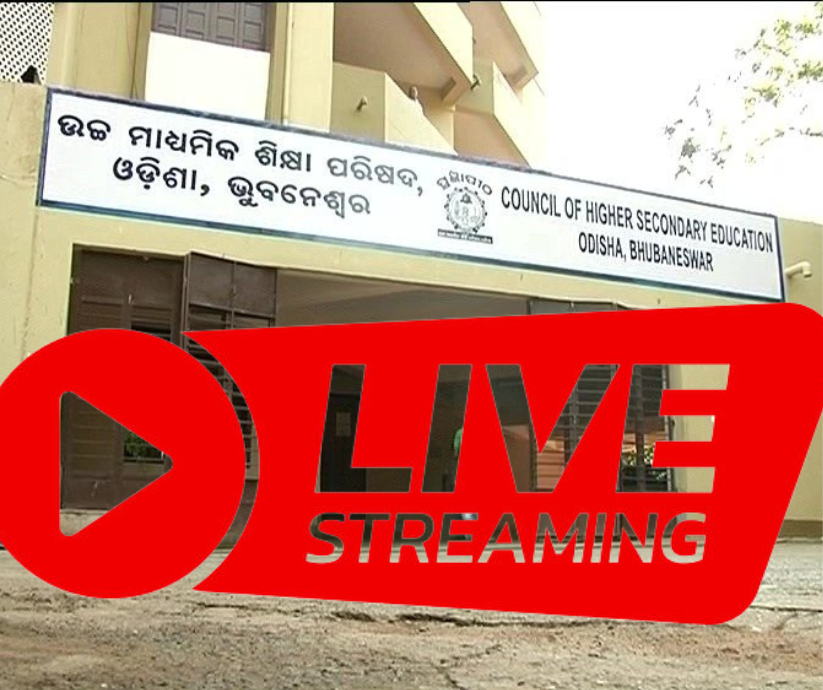In a groundbreaking decision, the Odisha School and Mass Education department are set to introduce livestreaming for the Class 12 Board Exams this year. This move aims to enhance transparency and curb malpractices during the examination process. Let’s delve into the details of this innovative step.
Livestreaming for Transparency
Ashwini Mishra’s Vision Ashwini Mishra, the chairman of the Council of Higher Secondary Education (CHSE), emphasized the need for transparency in the examination system. Drawing parallels with the Election Commission’s webcasting during elections, Mishra envisions the livestream as a tool to prevent malpractices. This marks a significant departure from traditional examination methods, introducing a real-time monitoring system.
Preventing Malpractice The livestream will empower officials stationed at the State control room in Bhubaneswar to closely monitor exam centers. With 575 cases of malpractice recorded in the previous exam, this initiative becomes crucial in maintaining the integrity of the examination process. The livestream not only acts as a deterrent but also allows immediate intervention if any irregularities are detected.
Implementation Challenges and Considerations
Logistical Considerations Despite the bold decision, CHSE faces logistical challenges in deciding whether to livestream from all 1100 examination centers. Mishra highlights the need for careful consideration, emphasizing the importance of the logistics involved. This pragmatic approach ensures a thorough evaluation before implementing livestreaming across all centers.
CCTV Installation Mandate To prepare for the livestream, all college principals have been instructed to submit a status report on the installation of CCTV cameras in their respective examination centers by December 15. This step ensures that examination halls, strong rooms, and laboratories are equipped with surveillance, laying the groundwork for a seamless livestreaming experience.
Priority for High-Risk Centers Acknowledging the limitations of flying squads to reach certain centers promptly, Mishra outlines a prioritization strategy. Livestreaming will be initially implemented in centers where the flying squads face challenges in immediate response, further strengthening the examination’s overall security.
Guidelines for Institutions
Installation Checklist Principals play a pivotal role in this transformative process. They are tasked with ensuring the installation of CCTV cameras in examination rooms, strong rooms, and laboratories. Mishra underscores the significance of functional cameras, especially in newly designated examination centers. To streamline the process, detailed information, including college name, college code, internet provider details, and DVR/NVR specifications, is requested.
Collaborative Effort This initiative reflects a collaborative effort between the Education Department, examination authorities, and educational institutions. By involving colleges in the installation and maintenance of surveillance equipment, the responsibility is shared, fostering a culture of accountability within the education system.

A Leap Towards Accountability and Transparency
In conclusion, the decision to livestream Class 12 Board Exams in Odisha marks a significant leap towards accountability and transparency in the education system. By adopting innovative measures like real-time monitoring, the Education Department aims to ensure the integrity of the examination process.
This collaborative effort between authorities and educational institutions sets a precedent for future advancements in examination procedures, emphasizing the commitment to fair and transparent evaluations. As we eagerly await the implementation, it’s clear that Odisha’s education landscape is evolving, embracing technology for the benefit of both students and the integrity of the examination system.
About CHSE:
The Council of Higher Secondary Education operates as an independent institution under the supervision of the School and Mass Education Department, Government of Odisha. Its primary responsibilities include conducting examinations and publishing results for students in the +2 level, as well as managing tasks such as affiliation and syllabus development.
The establishment of the Council of Higher Secondary Education, Odisha was authorized by the Odisha Higher Secondary Education Act of 1982, with the aim of regulating, overseeing, and enhancing the quality of higher secondary education in the state of Odisha. Initially, the Council operated from a rented building in Budheswari Colony, Bhubaneswar, starting from September 7, 1982. However, on January 2, 1996, the Council relocated to its own administrative building situated at Plot No. C-2, Samantapur, Bhubaneswar, which is now known as “PRAJNAPITHA”.
